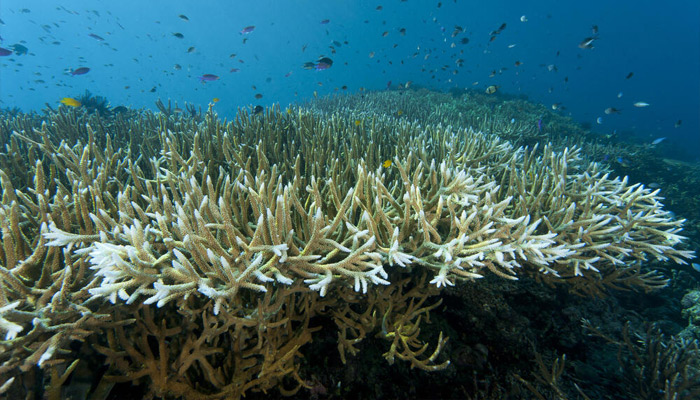Explained: What Is Coral Bleaching And How It Impacts The World
The consequences of coral bleaching are far-reaching, affecting not only the health of oceans but also the livelihoods of people, food security, and local economies.
The world is currently experiencing the second major coral bleaching event in 10 years, with reef systems from Australia to Florida at risk of dying following months of record-breaking ocean heat, a US agency announced Monday.
The consequences of coral bleaching are far-reaching, affecting not only the health of oceans but also the livelihoods of people, food security, and local economies.
Severe or prolonged heat stress leads to corals dying off, but there is hope for recovery if temperatures drop and other stressors such as overfishing and pollution are reduced.
“From February 2023 to April 2024, significant coral bleaching has been documented in both the Northern and Southern Hemispheres of each major ocean basin,” said Derek Manzello of the US National Oceanic and Atmospheric Administration (NOAA).
NOAA’s heat-stress monitoring is based on satellite measurements from 1985 to the present day. The current bleaching event is the fourth on record, with previous events in 1998, 2010 and 2016.
Since early 2023, mass bleaching of coral reefs has been confirmed throughout the tropics, including in Florida in the United States, the Caribbean, Brazil, and the eastern Tropical Pacific.
Australia’s Great Barrier Reef, the largest coral reef system in the world and the only one visible from space, has also been severely impacted, as have wide swathes of the South Pacific, the Red Sea and the Gulf.
“We know the biggest threat to coral reefs worldwide is climate change. The Great Barrier Reef is no exception,” Australia’s Environment Minister Tanya Plibersek said last month.
‘More frequent and severe’
Repeated mass bleaching events have threatened to rob the tourist drawcard of its wonder, turning banks of once-vibrant corals into a sickly shade of white.
Coral, marine invertebrates made up of individual animals called polyps, have a symbiotic relationship with the algae that live inside their tissue and provide their primary source of food.
When the water is too warm, coral expel their algae and turn white, an effect called “bleaching” that leaves them exposed to disease and at risk of dying off.
“As the world’s oceans continue to warm, coral bleaching is becoming more frequent and severe,” Manzello said.
“When these events are sufficiently severe or prolonged, they can cause coral mortality, which hurts the people who depend on the coral reefs for their livelihoods.”
Pepe Clarke of the nonprofit WWF added: “If we need a specific, visual, contemporary case of what’s at stake with every fraction of a degree warming, this is it. The scale and severity of the mass coral bleaching is clear evidence of the harm climate change is having right now.”

